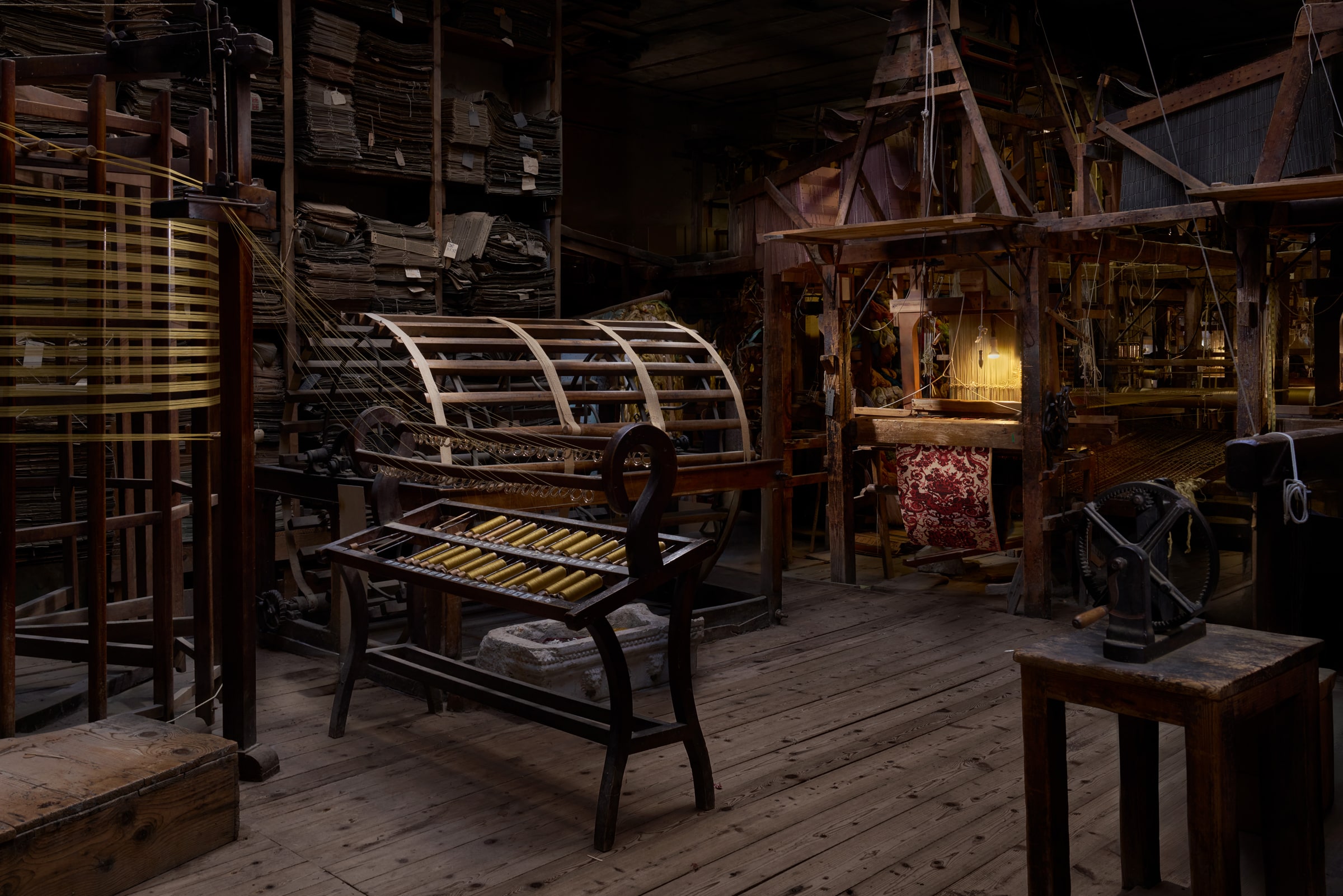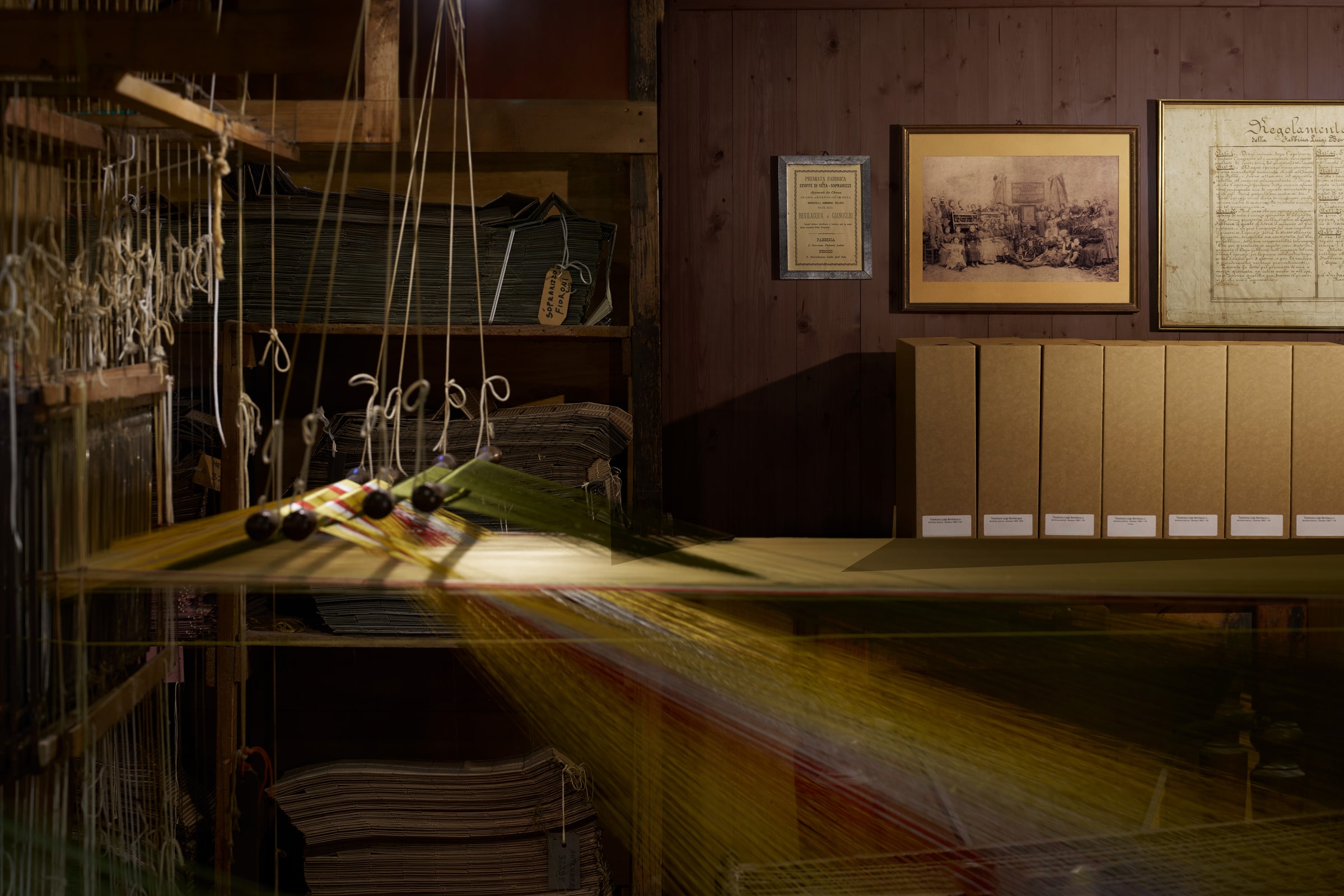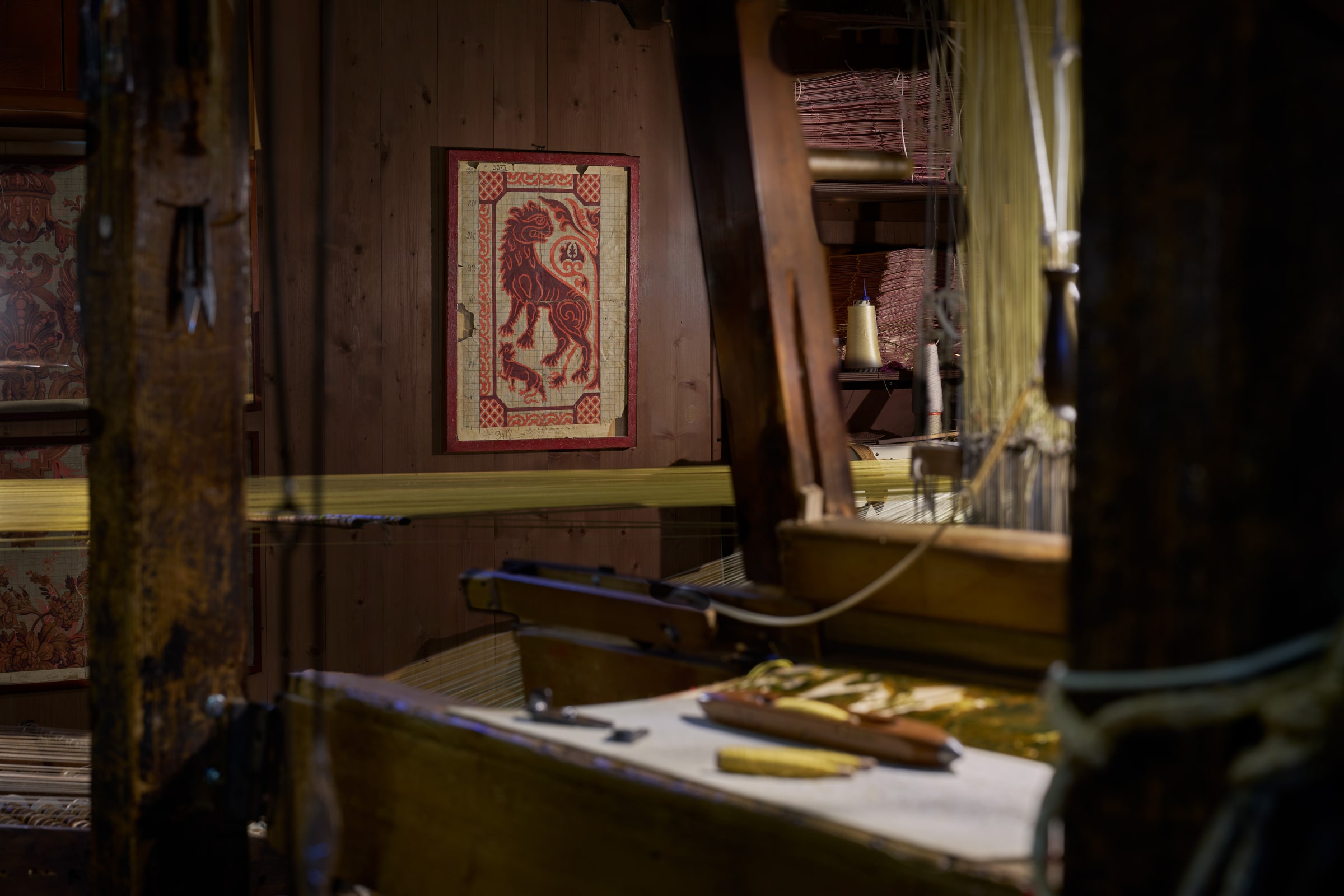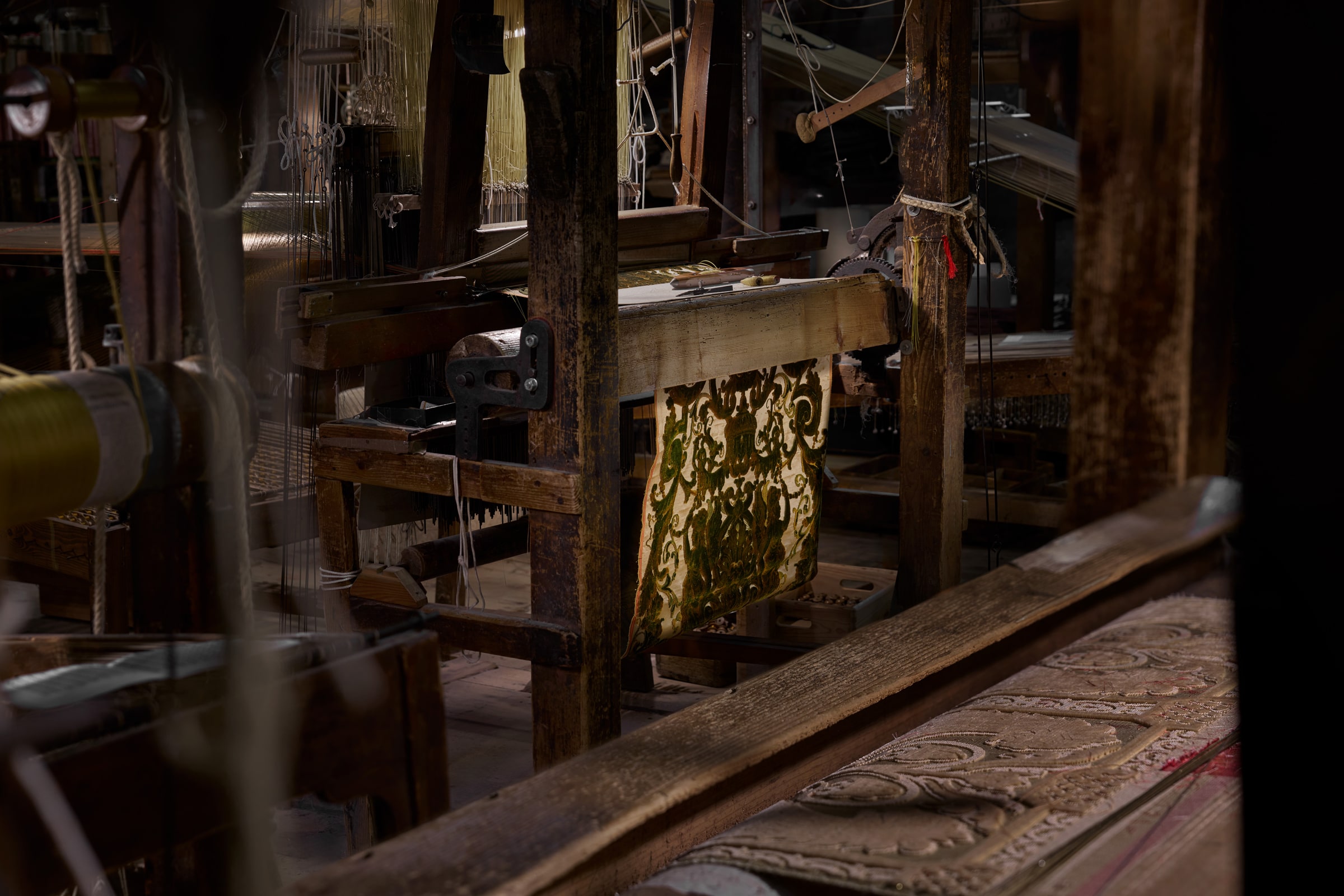History
Tessitura Luigi Bevilacqua makes itself the bearer of an all-Venetian history starting with its founder, Luigi Bevilacqua. Born into a Venetian family, Luigi Bevilacqua gave birth to the textile company at the end of the 19th century. The company would prove over time to be a true excellence known in Italy and abroad.
It is difficult to explain how he developed his sensitivity to the world of fine textiles, having been born into a modest family, where both his father, Sante, and mother, Carlotta Maria dalla Venezia, were "margaritari", that is, they worked with glass beads, more commonly known as "margarite". Perhaps it was his parents' work that prompted him to want to learn about the ancient Venetian arts, among which weaving is precisely one. Thus Tessitura Luigi Bevilacqua was born at the behest of Luigi, who, together with his business partner Giovanni Gianoglio, purchased some looms dating back to the 18th century and put them into operation starting probably as early as 1875, but with greater certainty from 1885.



A record of this important period in the history of the Tessitura is preserved in the company's historical archives: on the back of a hand-painted weaving draft is a stamp bearing the date 1897, where the headquarters of the time, namely Palazzo Labia in Venice, is clearly stated. This record is also signed by one of Luigi's sons, Antonio Bevilacqua.
Among the most valuable pieces preserved in the archives that help us reconstruct the history of the Tessitura are also many historical photographs. Prominent among them is one that captures a really large group of people. One immediately notices the high ceiling and the brightness of the room and, in the front row, seated in the center, the Patriarch of Venice, Cardinal Sarto, the future Pope Pius X. This is probably the only photographic evidence we have that allows us to place the Bevilacqua inside Palazzo Labia. The Tessitura would find its place in its present location starting in 1905, but it would take on the appearance it has today only after 1919, when Angelo Bevilacqua purchased and renovated the building.
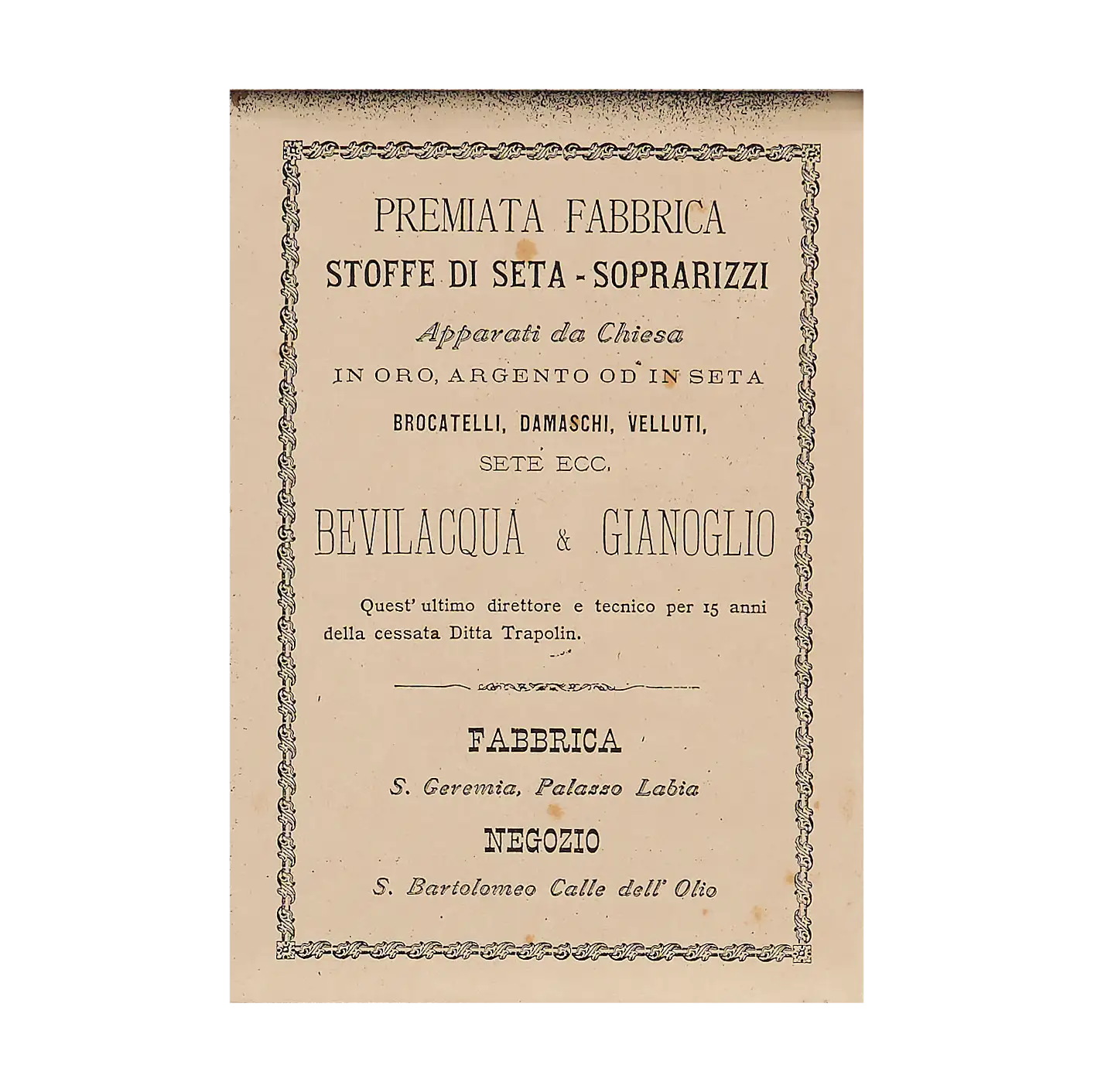
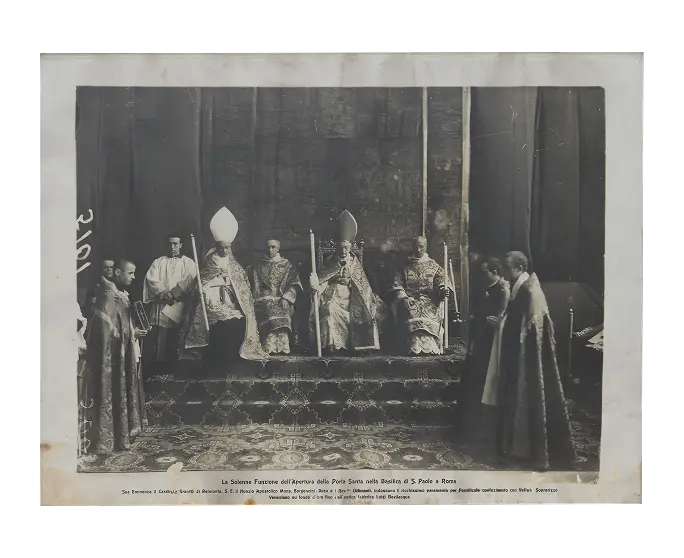
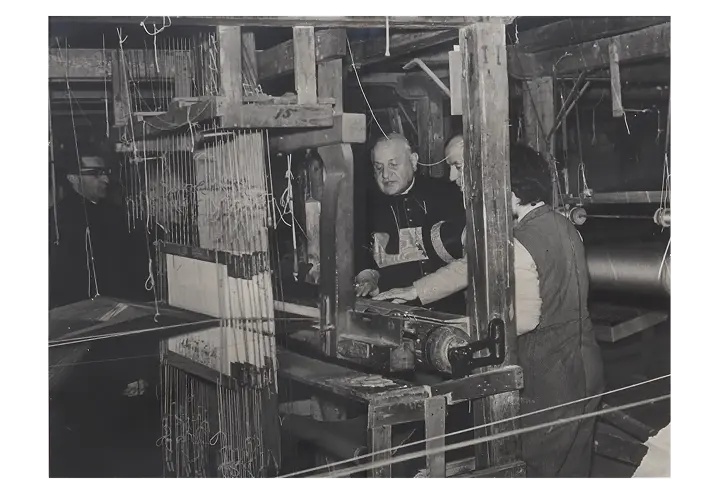
Over time, the Tessitura began to attract the attention of prestigious patrons, reaching numerous Italian and foreign cities and institutions with its products. It is worth mentioning that Bevilacqua held the title of Papal Supplier from at least 1953. Thus Bevilacqua also became a destination for visits by illustrious personalities, such as cardinals and monarchs, confirming itself as a business without equal.
To the left
Type
Photograph
Name
Photograph depicting the opening ceremony of the Holy Door of the Basilica of St. Paul in Rome
Date
1925
To the right
Type
Photograph
Name
Photograph taken during the visit to the Tessitura of Cardinal Roncalli, later Pope John XXIII
Date
07/01/1957

Type
Photograph
Name
Group photo
Date
inizio 1900
It is difficult to explain how he developed his sensitivity to the world of fine textiles, having been born into a modest family, where both his father, Sante, and mother, Carlotta Maria dalla Venezia, were "margaritari", that is, they worked with glass beads, more commonly known as "margarite". Perhaps it was his parents' work that prompted him to want to learn about the ancient Venetian arts, among which weaving is precisely one. Thus Tessitura Luigi Bevilacqua was born at the behest of Luigi, who, together with his business partner Giovanni Gianoglio, purchased some looms dating back to the 18th century and put them into operation starting probably as early as 1875, but with greater certainty from 1885.


Type
Weaving draft
Name
Il Verde
Date
1897
A record of this important period in the history of the Tessitura is preserved in the company's historical archives: on the back of a hand-painted weaving draft is a stamp bearing the date 1897, where the headquarters of the time, namely Palazzo Labia in Venice, is clearly stated. This record is also signed by one of Luigi's sons, Antonio Bevilacqua.

Type
Document
Name
Advertising flyer
Date
s.d.
Among the most valuable pieces preserved in the archives that help us reconstruct the history of the Tessitura are also many historical photographs. Prominent among them is one that captures a really large group of people. One immediately notices the high ceiling and the brightness of the room and, in the front row, seated in the center, the Patriarch of Venice, Cardinal Sarto, the future Pope Pius X. This is probably the only photographic evidence we have that allows us to place the Bevilacqua inside Palazzo Labia. The Tessitura would find its place in its present location starting in 1905, but it would take on the appearance it has today only after 1919, when Angelo Bevilacqua purchased and renovated the building.

Type
Photograph
Name
Photograph depicting the opening ceremony of the Holy Door of the Basilica of St. Paul in Rome
Date
1925

Type
Photograph
Name
Photograph taken during the visit to the Tessitura of Cardinal Roncalli, later Pope John XXIII
Date
07/01/1957
Over time, the Tessitura began to attract the attention of prestigious patrons, reaching numerous Italian and foreign cities and institutions with its products. It is worth mentioning that Bevilacqua held the title of Papal Supplier from at least 1953. Thus Bevilacqua also became a destination for visits by illustrious personalities, such as cardinals and monarchs, confirming itself as a business without equal.
AND THE HISTORICAL PHOTOGRAPHS LISTEN TO THE WITNESSES

